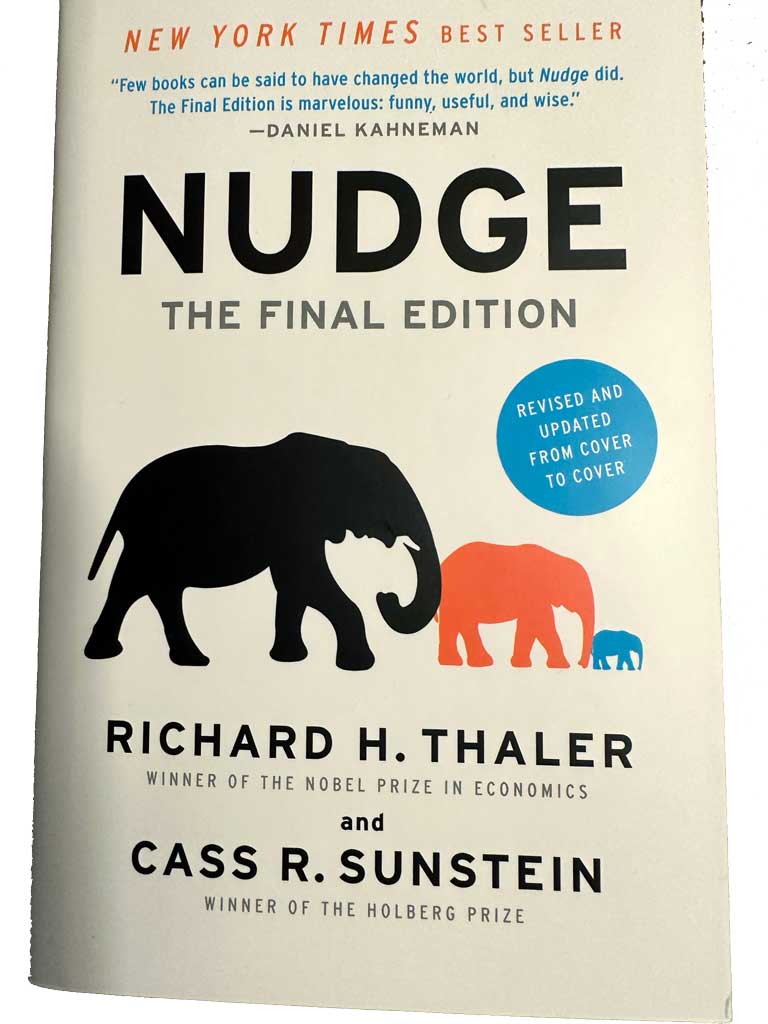Last Updated on October 23, 2024 by Michael Moshkovich
.You know, having a well-optimised and engaging website is key in today’s digital world. To help boost your website’s ranking and user experience the principles in Richard H. Thaler’s book “Nudge: Improving Decisions About Health, Wealth and Happiness” are really useful. In this post we’ll explore the key concepts and how to apply them to your website design, content and overall marketing strategy.
Default Options
Thaler says default options can influence user decisions. In the context of a website this could mean simplifying user navigation, placing call-to-action (CTA) buttons and streamlining data input forms. To use the power of default options focus on these areas:
Navigation
Spend time developing your website’s menu structure and content hierarchy so users can find what they need in as few clicks as possible. Organise your content into logical categories and put your most important pages in your main navigation menu.
Place CTAs Strategically
Your website’s main goal should be to engage users and get them to take desired actions, whether that’s to buy, sign up for a newsletter or download a resource. Put prominent and clear CTAs in place to guide users through the conversion process and limit distractions and anxiety.
Streamline Data Input
Offer pre-filled or suggested input options in forms to make your users’ lives easier. This will not only make the process smoother but also nudge users to make a choice, e.g., subscribe to your newsletter by default.
Use Anchoring
Thaler says people’s decisions are influenced by how information is presented. This is called “anchoring”. Here are a few ideas on how to use anchoring on your website and content:
Compare
Comparing your website’s products or services to competitors can be a great way to anchor your offerings in users’ minds. Show the unique benefits of choosing your brand and make sure your pricing is competitive and transparent.
Build Trust
Showcase customer testimonials, ratings and reviews on your website to build user trust. This will impact how users perceive the value of your offerings and create a positive anchor in their decision-making process.
Show Numbers and Metrics
Got some impressive stats about your brand? Use them as anchors to provide context and attract new customers. For example, if you’re a marketing agency, feature notable metrics like a number of leads generated, ad impressions, and testimonials as a visual focal point on your website.
Use the Principle of Social Influence
The “Nudge” principle of social influence says people make decisions based on what others are doing. Use this principle to make your website more effective in these ways:
- Show Social Proof: Display social media mentions, comments, and shares to demonstrate your brand’s popularity and positive influence. Also, show real-time data, e.g., the number of people on your website or the number of people who have bought a product in the last hour.
- Encourage User-Generated Content (UGC): Get users to engage with your brand by creating content that reinforces positive experiences, eg product reviews, blog comments or people using your products. This creates a sense of community and positions your brand as the go-to in your niche.
- Highlight Influencers & Partnerships: Show social proof from influencers and partners, eg logos of publications that have featured your brand or endorsements from industry leaders.
Be Transparent
Thaler says transparency in decision-making is key to a good nudge. By being transparent on your website you can build trust and influence users’ decisions:
- Be Clear About Pricing: Make your pricing structures transparent and simple and reflect the true cost of your product or service. Make it easy for users to compare options and understand the full scope of their decision.
- Clarify Any Additional Costs: If any additional fees or costs are associated with your offering, disclose them. Hidden costs can lead to bad user experiences, and transparency will prevent that.
Using the principles from Richard H. Thaler’s “Nudge: Improving Decisions About Health, Wealth, and Happiness” can improve your website’s user experience and ranking. By understanding default options, anchoring, social influence, and transparency, you can have a website that ranks higher, serves your audience better, and gets them to engage and convert.
Read Nudge By Richard H. Thaler and Cass R. Sustien to nudge your website to success.

